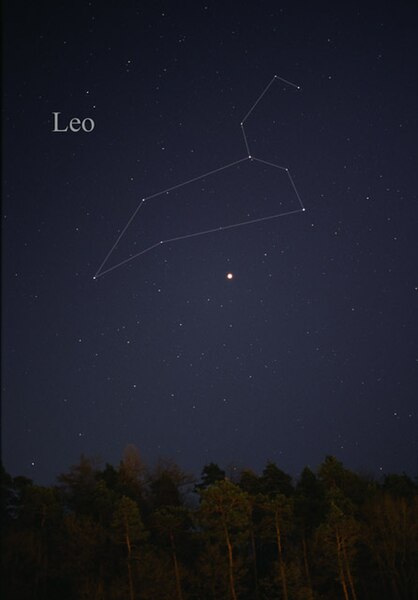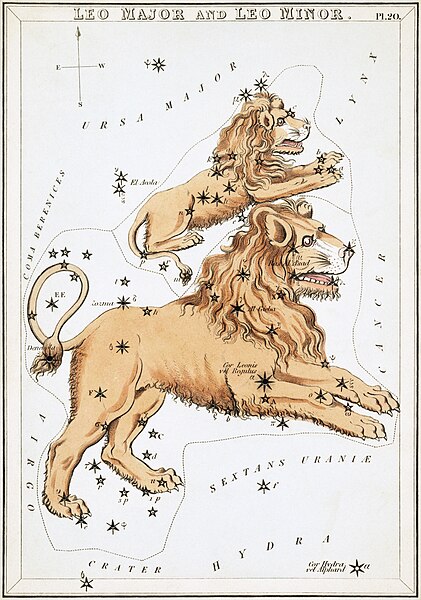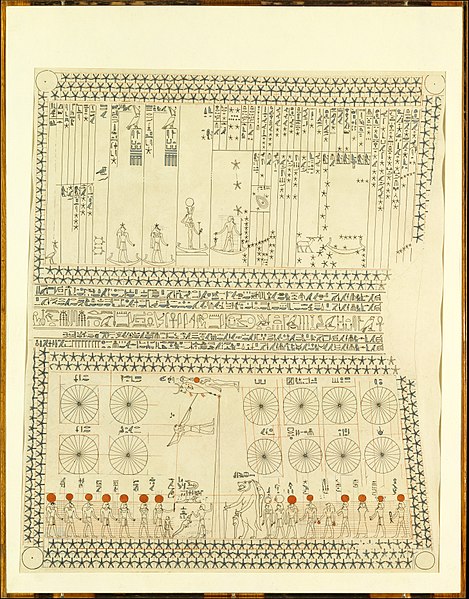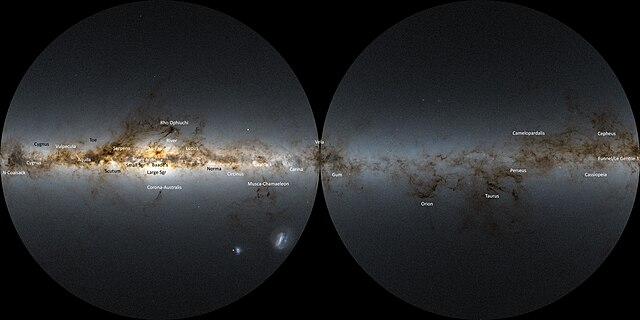Leo is one of the constellations of the zodiac, between Cancer the crab to the west and Virgo the maiden to the east. It is located in the Northern celestial hemisphere. Its name is Latin for lion, and to the ancient Greeks represented the Nemean Lion killed by the mythical Greek hero Heracles as one of his twelve labors. Its old astronomical symbol is (♌︎). One of the 48 constellations described by the 2nd-century astronomer Ptolemy, Leo remains one of the 88 modern constellations today, and one of the most easily recognizable due to its many bright stars and a distinctive shape that is reminiscent of the crouching lion it depicts.
The constellation Leo as it can be seen by the naked eye (the bright object in the center of the picture is the planet Jupiter in March 2004).
Leo, with Leo Minor above, as depicted in Urania's Mirror, a set of constellation cards published in London c.1825
Messier 66
The notable gravitational lens known as the Cosmic Horseshoe
A constellation is an area on the celestial sphere in which a group of visible stars forms a perceived pattern or outline, typically representing an animal, mythological subject, or inanimate object.
Babylonian tablet recording Halley's Comet in 164 BC
Egyptian star chart and decanal clock, from the ceiling of Senenmut's tomb, c. 1473 BC
The Milky Way as seen by Gaia, with prominent dark features labeled in white, as well as prominent star clouds labeled in black.
Inca dark cloud constellations in the Mayu (Celestial River), also known as the Milky Way. The Southern Cross is above Yutu, while the eyes of the Llama are Alpha Centauri and Beta Centauri.








